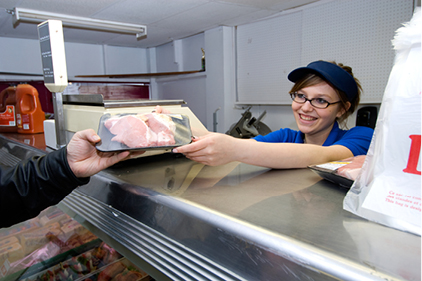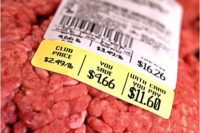The information they collect can have a profound effect on productivity if applied thoughtfully and selectively. As one industry source told me, “Collect data where you can and make decisions from it.”
The data is out there to be found, and these computers — yes that’s what they are — can generate terabytes of it, thank you. Continuing his thought, the same source pondered, “The more data you have, the better decisions you will make.”
It’s an arguable point, but if you understand what’s vital to you and what’s trivial then the statement is spot on.
Apparently, weighing technology has become so much more than measuring tons of raw product in and tons of finished products out. With an eye toward constant improvement in reducing product giveaway, systems suppliers can give processors a look at the productivity of individual employees at each touchpoint within the process.
Tracking can be eye-opening to processors, uncovering issues they were not aware of through access to better information, such as seeing who is doing the job and who may be working the system or helping to identify potential areas of labor savings through automation.
Wireless connectivity enables simultaneous remote monitoring of numerous production lines periodically throughout a shift enabling processors to react to problems (yield loss, for example) during the shift and not afterward, as may be the case with machine control systems. Yield deviations over time can be detected, diagnosed and addressed due to software enhancements enabling customized dashboard creations that allow monitoring of the critical few data points on the hour or half-hour during shifts.
Over time, data can even help answer, “Can I change my product to where there is less giveaway?” Real-time distinctions can be made regarding equipment or operator issues and appropriate corrections made. The need for equipment adjustments and direct maintenance checks that keep product flowing and avoid possible shutdowns can also be detected and analyzed remotely, and addressed. From the suppliers’ perspective, this early diagnosis can save a technician being diverted to the scene, saving time and money for them and the customers.
Integration into existing production lines has become simpler and easier due to systems-design improvements incorporating more modular design elements. It’s unfair and simplistic to call it “plug and play,” but weigh-systems suppliers understand that less disruption is more appealing. Interface is also more accessible for weight and label information, as required.
With so much data gathering capability in weigh-scale systems, making better decisions from that data really comes down to how you get it and put it together. Then how do you communicate it so it’s actionable and not paralyzing?





Report Abusive Comment